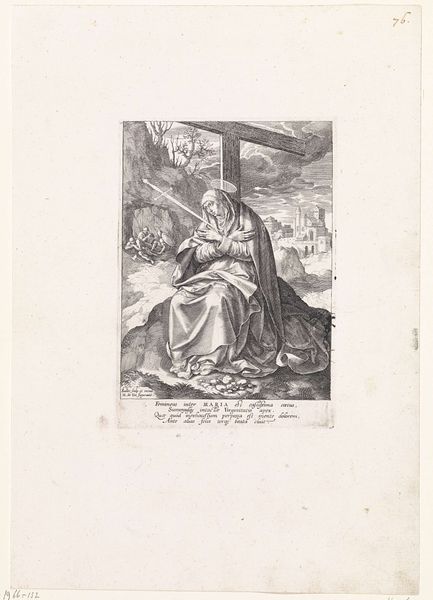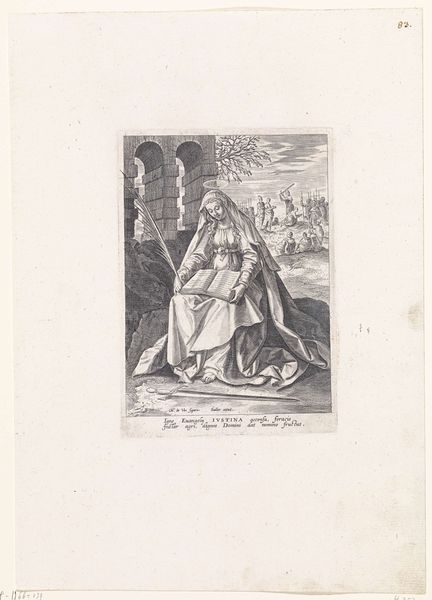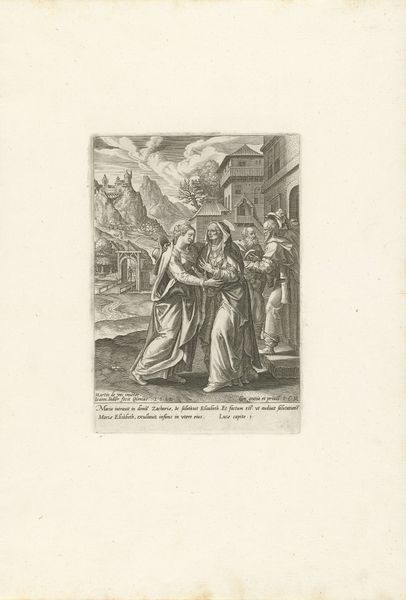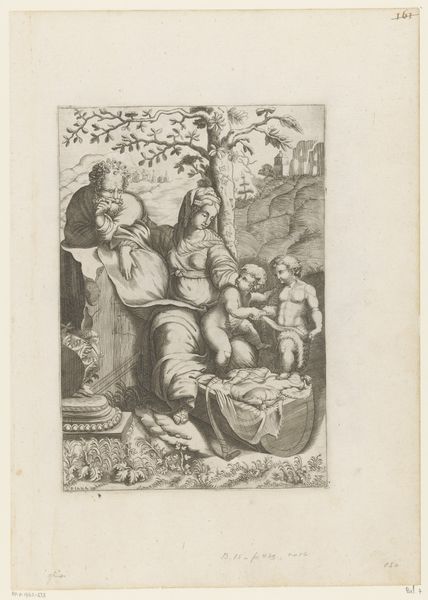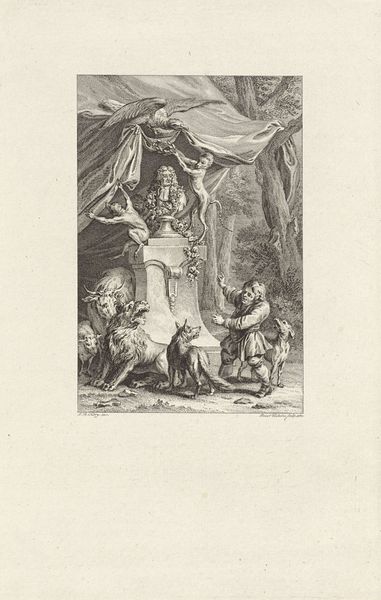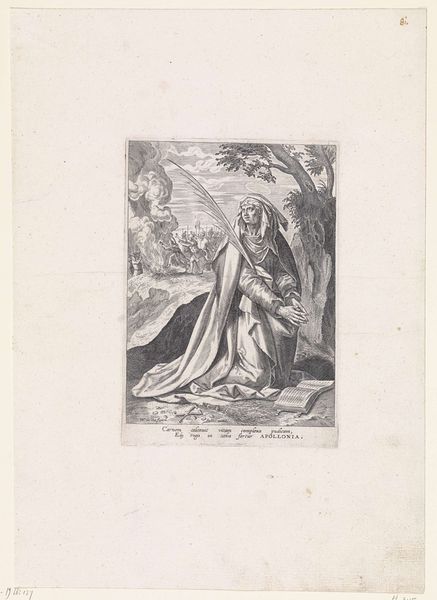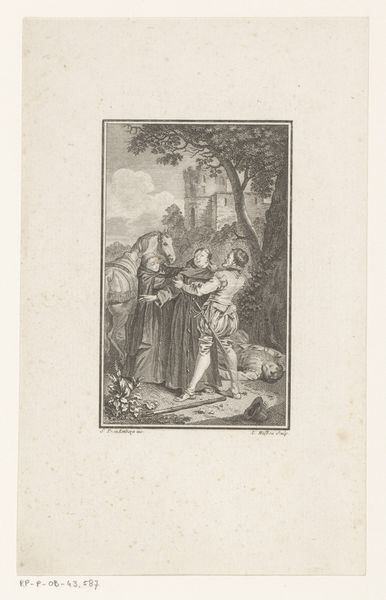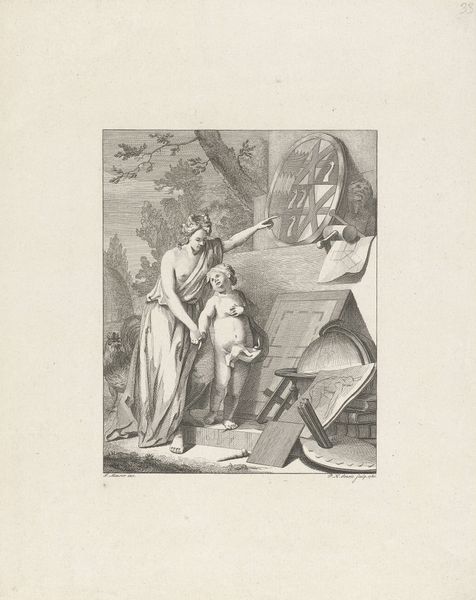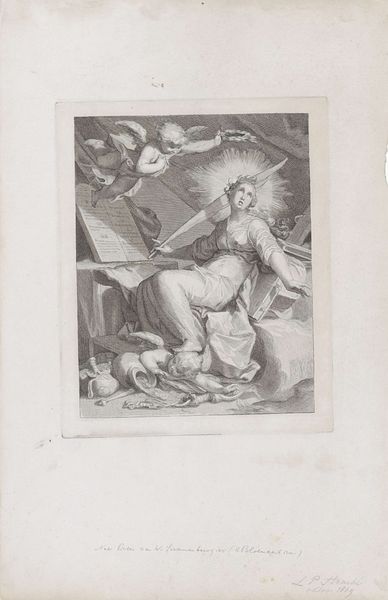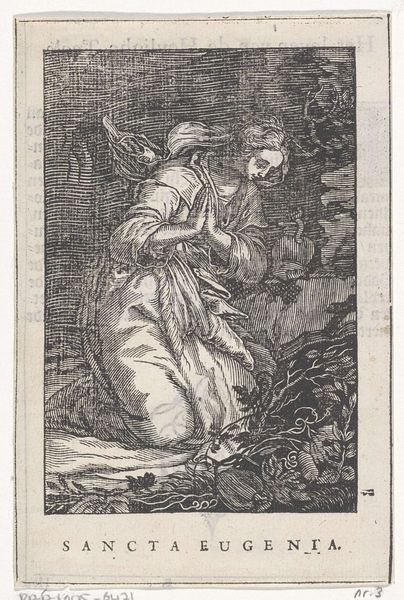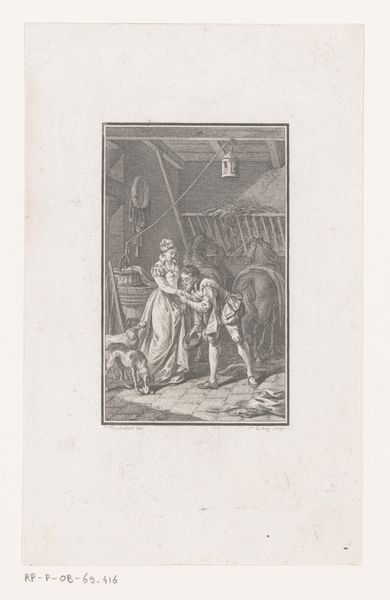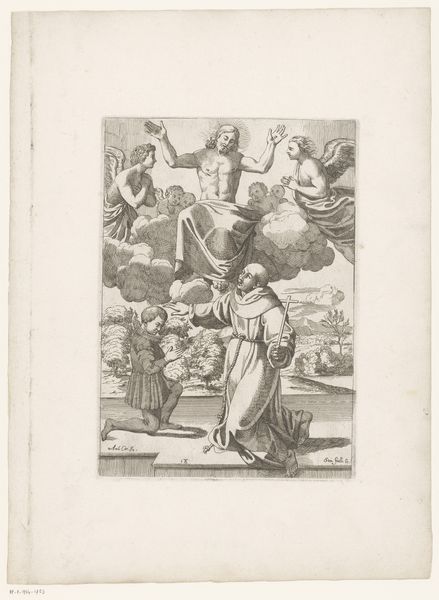
print, engraving
#
portrait
# print
#
landscape
#
mannerism
#
figuration
#
history-painting
#
engraving
Dimensions: height 185 mm, width 129 mm
Copyright: Rijks Museum: Open Domain
Editor: So, this is *Heilige Prisca*, or Saint Prisca, an engraving by Johann Sadeler I, dating back to somewhere between 1583 and 1587. It's currently held at the Rijksmuseum. It’s striking how much detail is packed into this small print, almost like a miniature drama unfolding. What do you make of it? Curator: Oh, isn't it just glorious? It’s more than just detail; it’s a story, a moment frozen in time with incredible Mannerist flair. See how Prisca's figure is elongated, almost yearning? The drama of the scene is heightened by the landscape; everything is dynamic, charged. Notice how Sadeler contrasts the peaceful prayer of Prisca with the distant execution scene, and tell me if that tells you something about her world? Editor: It certainly gives a sense of the threats she would've faced, her faith tested amidst the landscape. It is as though, the more still she remains in faith, the more the world moves against her. Curator: Exactly! It speaks to the heart of martyrdom. But it’s not just about death; it’s about unwavering belief in the face of earthly trials. Think about how this image would’ve resonated then – a visual sermon in a time of religious upheaval. Imagine having to create this kind of devotion, through the skillful handling of light and shadow with engraving tools. It just astonishes me. Editor: I hadn’t considered the religious context that deeply. Looking closer, the fish lying in front of her also speaks to a kind of offering or sacrifice to a greater cause than herself. Thanks! Curator: Indeed, you've put your finger right on it, Editor. It is all connected, all intentional, an orchestrated message rendered with an artist's devotion. And in engaging with art in such ways, we start our own act of devotion, seeing it with new eyes.
Comments
No comments
Be the first to comment and join the conversation on the ultimate creative platform.
